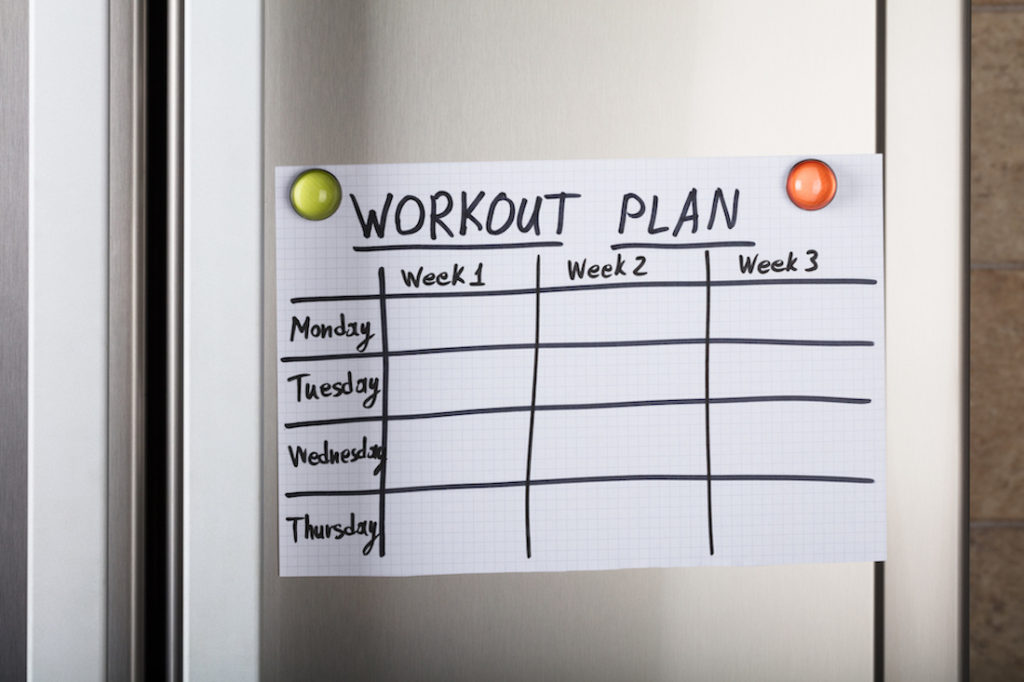Words: Uma Basso
Photo: AndreyPopov
It’s no secret, more often than not, we start the year with aspirations and dreams of getting fit, healthy, and a ‘new you.’ Unfortunately, these goals are long-term and based on how we wish to look. For instance, we note down that we want to lose 15 pounds, get abs or gain a smaller waist rather than creating short-term goals.
Ultimately, your goals will fall through within a couple of weeks. You may feel disappointed, like a failure, and be unable to continue following your exercise regime. Therefore, you should break this vicious cycle and curate an exercising plan based on realistic goals. Learn to stick to your fitness goals by following the tips down below:
The Process of Setting Realistic Exercise Goals
Sometimes achieving a particular result is defined by reaching a goal. Therefore, in such cases, goal setting is a psychological tool that individuals utilize. Here you identify something you wish to accomplish and, in turn, establish a plan for how you’ll achieve that.
In this way, people learn to prioritize the behaviors that aid them in their journey of achieving a goal. In turn, exercise becomes a part of your day-to-day schedule. An in-depth study revealed that setting goals and providing regular feedback about your progress enhances your physical activity.
Moreover, setting realistic goals is critical because it ensures your motivation levels are high. If you set unrealistic goals, you’ll likely start feeling discouraged day-by-day, your goals will begin becoming shaky, and eventually, you’ll give up. On the flip side, setting realistic goals provides your life with direction, boosts your self-confidence, and ups your motivation.
Setting S.M.A.R.T Fitness Goals
Now it’s time to set the right goals systematically. For this purpose, individuals utilize the S.M.A.R.T acronym, which stands for:
Specific
Your goals need to be precise, a well as serve as a personal motivator
Measurable
Your desired goal should be easy to measure objectively. It will help you to track your progress as well.
Achievable
Your goal should boast the perfect balance between being realistic and challenging. It means that your plan should push you beyond your daily schedule.
Relevant
Your goal should feel necessary while aligning with your other fitness-related aspirations.
Time-Bound
Craft a deadline for yourself to ensure you prioritize the outcome goal and stick to your tasks.
Top Tips for Setting Realistic Exercise Goals
Let’s explore the top tips that’ll help you get fit:
Start Small
Setting smaller goals and creating milestones helps ensure you stay committed to your plan. Here’s how you can remain realistic about small milestones that lead to long-term success:
- A practical way to kick start your fitness journey is by delegating around 15 minutes once per week for exercising. Add up the number of days or the timeframe after every four weeks.
- Select exercise classes that match your biological clock. For instance, if you’re an early riser, you should sign up for early morning exercises.
- Know your physical capabilities and select exercises that match your abilities and stamina.
- Start with easier, half exercises to build up strength. For instance, try wall push-ups before adding push-ups to your exercise regime.
Making Time in Your Schedule
It is pretty challenging to set a schedule for your fitness regime. But here we have some tips that can help you develop your daily exercise plan:
- Evaluate how you spend your time on a day-to-day basis. After that, rearrange your schedule to dedicate a timeslot strictly for exercising.
- Try to combine certain errands to free up time in your daily, busy schedule.
- An early morning plan prevents chances of hindrance in daily activities that could otherwise cause you to miss your workout sessions.
Create a Support System
Create a team that helps you breathe life into your dreams. Ask yourself who you can ask for support and encouragement during your journey. No matter if it’s your family member or your friend, as long as they support you and hold you accountable to your goal, you’ll notice a huge difference.
Another good idea is to get a workout buddy. When you make plans with other people, the chances of you canceling at the last minute are less.
Tracking Your Progress
One effective way to maintain progress is to write down your daily goals. In-depth research shows that you’re 42% more likely to achieve your dreams if you write them down.
After writing down your goal, be sure to track your day-to-day progress. Whether you think you’re a number person or not, you must hit number goals during your fitness journey. A measurable goal and tracking it is a fantastic way to ensure you stay motivated.
Consistency is Key
For a healthy lifestyle, you should create a routine and follow it religiously. Always keep in mind that consistency is critical to achieving your goals.
Once you determine your goal, take some time to consider who you plan to integrate it into your current lifestyle. For instance, you could start taking the stairs more often. Or you may walk to work instead of taking the subway.
Focus on selecting a goal that takes you several months or a year to achieve—a long-term mentality aids in visualizing your goal as a lifestyle choice rather than a quick fix.
Final Words
When creating an exercise plan and setting goals is critical to keep in mind that getting a good night’s sleep is crucial. Rest provides your body with the time necessary to recover and rebuild muscles. On top of that, a healthy night’s sleep helps conserve energy for your next workout.
Moreover, keep in mind that balance is vital when exercising. If you work out too hard without getting proper rest and recovering, you’ll likely experience burnout and less happiness. Setting goals can be equally helpful for novice and experienced exercisers. They can benefit from the structure necessary for traveling down a healthier, fit road.
